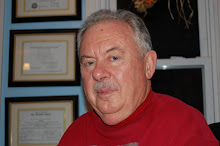If you should ever wonder how many people in the world do not have the Word of God translated into their heart language, now you know. According Wycliffe Translators, the figure is 380,000,000. They have set a goal of getting the Scriptures, at least part of it, into the languages of all these people by the year 2025. When you take into consideration that it normally takes from 30 to 40 years to produce one translation, then the enormity of the task even is more daunting. But their philosophy is, "We have a big God and with his divine help, we can do it."
On Thursday evening, May 1, 2008 I attended a Wycliffe Associates banquet in Manhattan, Kansas. I took with me two of my fellow college professors and two students. One of the professors was very excited about what he saw and heard. The students were quite impressed. A young lady from MCC who attended said she wanted to be a translator. So the trip was more than worthwhile.
Wycliffe Associates is the backup team for Wycliffe Translators. They endeavor to keep the machinery running while the translators put their time into translation.
It is important to remember that the first stage of this project is reducing the language to writing. All of the languages left that do not have the Bible translated are also languages that are not in print form. So the translator must exercise his listening skills and piece together an alphabet from the sounds he/she hears in the new language. Eventually primers and grammars will be produced. Finally the big project of producing a translation begins. This is done with the aid of language helpers who guide the translator through the intricacies of the language.
The guest speaker at the Manhattan banquet was a Philippine national named Nard Pugyao. To get a picture of where Nard lived in the northern Philippine islands you need to hear his description of how the first Wycliffe translator got there. The government of the Philippines arranged with the Wycliffe Translators for them to come and help bring literacy to the distant tribes who were scattered throughout the islands.
To get to the Isnag people, Dick Roe flew from the United States to the Philippine Islands. He boarded a bus that took him as far north as the bus could go. He then went up the river by ferry as far as the ferry would go. He then went by rowboat as for as the rowboat could go. Finally he hiked over the mountains for over eight hours and finally reached the village of the Isnag people, who were headhunters.
The Isnag people had no idea what this tall white man was doing among them. Did he come to exploit them or take advantage of them? What did he mean when he indicated he wanted to learn their language? He ate their food and slept in their homes and gradually learned the language and reduced it to writing.
These people lived in deep darkness spiritually. They lived lives of fear from the demons that continually harassed them, always demanding sacrifices, sometimes even human sacrifice. When Dick Roe presented the possibility of a god who was greater and more powerful than the demons that oppressed them, they became excited. But they had a difficult time understanding how such a powerful God could allow his Son to die in such a horrible way.
Nard would eventually accept Christ. He was selected by the Wycliffe Translators to be trained to be a JAARS pilot and continues in that role until today.
The program was excellent. I will go again when they return in 18 months. I will take as many students and others as I can to hear what is happening. Perhaps a few more will get the vision.

2 comments:
was just looking for info about Nard (I heard him at a Wycliffe meeting a couple of years ago). Found some radio interviews at http://jaars.org/speeding-the-word.shtml , a website at http://www.isnag.org/ that hasn't been updated for a while.
...and your post. Thought you might be interested in these too.
Thanks for the website. I found Nard to be very interesting as well as inspiring. I'm sure he does a lot of good for Wycliffe.
Post a Comment